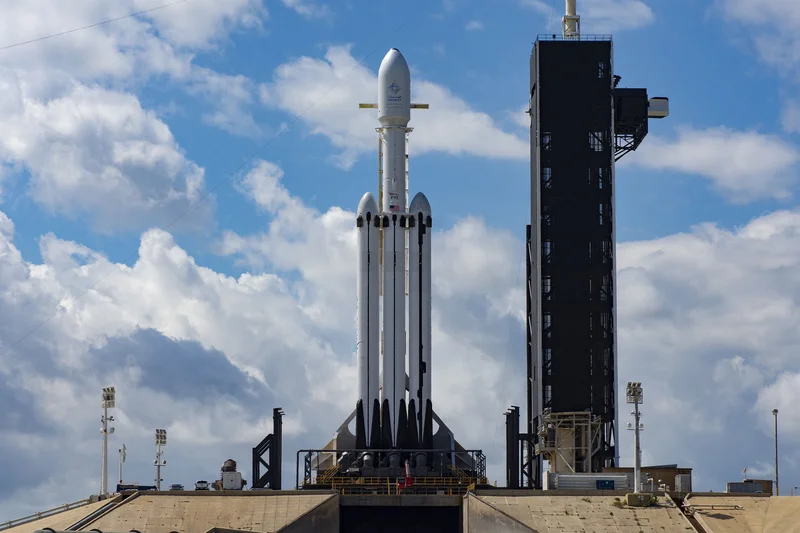SpaceX Launch: Schedule, Falcon 9 Details, and Florida Locations
The Numbers Behind the Spectacle
SpaceX did it again. Two Falcon 9 rockets launched within four hours of each other from Florida's Space Coast on November 14th, carrying another batch of Starlink satellites into low Earth orbit. Add to that the planned Vandenberg launch on November 16th, and you have a very busy weekend for the company. The sheer volume is impressive. We're talking about the 145th and 146th Falcon 9 missions this year alone. More than 100 of those were dedicated to building out the Starlink megaconstellation.
That's a launch cadence that was unthinkable a decade ago. And, frankly, it raises some questions that aren't being asked loudly enough. The official narrative is all about "innovation" and "access to space," but let's dig a bit deeper.
The Starlink constellation now numbers over 8,900 operational satellites, and it's growing rapidly. SpaceX is essentially building its own internet service from space. The stated goal is to provide global internet access, particularly to underserved areas. Noble enough. But what's the business model? How many subscribers do they need to make this sustainable? And what are the long-term consequences of cluttering low Earth orbit with thousands of satellites?
We also saw Blue Origin successfully launch its New Glenn rocket. While SpaceX has been landing boosters for years, this was a first for Bezos’ company. Blue Origin rocket successfully lands booster during launch
The Sustainability Question
Here's where my analysis gets a bit less celebratory. All this activity comes at a cost. Each launch requires vast amounts of fuel (refined kerosene and liquid oxygen, specifically), and while the Falcon 9 is partially reusable, each landing and refurbishment cycle adds to the overall carbon footprint.
How big is that footprint, exactly? That's surprisingly difficult to quantify. SpaceX doesn't publish detailed environmental impact reports (at least, I haven't been able to find them), and independent assessments are scarce. We're left with back-of-the-envelope calculations based on fuel consumption estimates and atmospheric models. Those estimates vary widely.
And this is the part of the report that I find genuinely puzzling. Why is there so little transparency around the environmental impact of space launches? Is it because the numbers are unflattering? Or is it simply that no one has bothered to ask the question until now?

Furthermore, the Vandenberg launch is subject to a new FAA curfew restricting launches to between 10 p.m. and 6 a.m. local time. This mandate, originally intended to ease the strain of the government shutdown, remains in effect. It's possible to obtain exemptions, as Blue Origin did recently, but the existence of this curfew suggests growing concerns about the impact of launches on local communities – noise pollution, light pollution, and potential safety hazards.
What happens when launch frequency increases to the point where these exemptions become the norm? Does the FAA have the resources to adequately assess each request?
The Sentinel-6B satellite launched from Vandenberg is designed to measure sea levels and atmospheric temperatures, vital data for understanding climate change. The irony is thick enough to cut with a knife: a rocket burning tons of fuel to launch a satellite that will monitor the effects of burning tons of fuel. It’s like trying to put out a fire with gasoline.
Debris and the Tragedy of the Commons
Beyond the environmental impact, there's the increasingly pressing issue of space debris. With nearly 9,000 Starlink satellites already in orbit, and thousands more planned, low Earth orbit is becoming increasingly crowded. Each satellite is a potential piece of space junk waiting to happen. Collisions create more debris, which increases the risk of further collisions, creating a cascade effect known as the Kessler syndrome.
SpaceX has implemented measures to deorbit defunct satellites, but even these controlled re-entries pose a risk. And what happens if a satellite malfunctions and can't be deorbited? Who's liable when space junk damages another satellite, or worse, falls back to Earth?
These are questions that need to be addressed urgently, before low Earth orbit becomes unusable. It’s a classic tragedy of the commons: everyone benefits from access to space, but no one is fully accountable for the consequences of their actions.
SpaceX is not alone in contributing to this problem, but their aggressive launch schedule and massive constellation make them a major player. It's time for a serious discussion about the long-term sustainability of this approach.
The Price of Progress?
SpaceX's achievements are undeniable. They've revolutionized access to space and driven down launch costs. But progress without responsibility is a dangerous thing. We need to start asking tougher questions about the environmental impact and long-term sustainability of these activities. Otherwise, we risk sacrificing the future for short-term gains.
Tags: spacex launch
Zcash Price vs. Bitcoin: What's Driving the Crypto Buzz?
Next PostDaniel Driscoll: New Army Secretary and ATF Speculation
Related Articles
